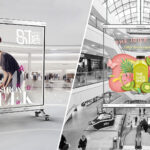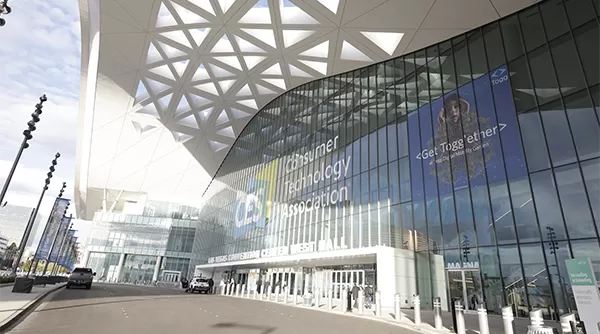
How Transparent LED Film Screens Are Redefining Digital Signage
2024-12-04
Brand Story about MUXWAVE
2024-12-16The world of architecture is evolving, with technology playing a major role in reshaping how buildings are designed and experienced. Among the most exciting innovations is the integration of Transparent LED Film Screens in smart buildings. These advanced displays are not just a tool for advertising—they are becoming an integral part of building facades, windows, and interiors, merging cutting-edge digital functionality with sleek architectural aesthetics. In this article, we’ll explore how Transparent LED Film Screens are revolutionizing smart buildings, providing energy-efficient solutions while enhancing design and interactivity.
What Are Transparent LED Film Screens?
Transparent LED Film Screens are a type of digital display that allows for high-resolution content to be projected onto a transparent surface, such as a glass window or wall. Unlike traditional LED screens, these film-based displays maintain a transparent look, allowing visibility behind the screen while simultaneously displaying dynamic visuals such as videos, animations, and real-time content. This innovative technology merges digital signage with architectural design, creating endless possibilities for the future of smart buildings.
Key features of Transparent LED Film Screens include:
Transparency: They allow full visibility behind the display, which makes them perfect for use on glass facades and windows without obstructing views.
Energy Efficiency: These screens are designed to consume less power compared to traditional digital signage, making them an eco-friendly choice.
Interactive Capabilities: Some versions of these displays are equipped with touch functionality, enabling interactive content that engages viewers directly.
Personalización: The flexible nature of the LED film allows it to be integrated seamlessly into building materials, creating a sleek, modern look.
The Role of Transparent LED Film Screens in Smart Buildings
Smart buildings are defined by their ability to incorporate advanced technologies for greater energy efficiency, sustainability, and user engagement. Transparent LED Film Screens are becoming an essential feature in these environments, serving both practical and aesthetic purposes.
Dual Purpose: Digital Displays and Smart Windows
One of the key advantages of Transparent LED Film Screens is that they serve dual functions. As digital displays, they allow for captivating visual content, such as advertisements, interactive interfaces, or wayfinding systems. At the same time, they function as energy-efficient windows. These smart windows can control the amount of light, reduce heat gain, and provide privacy when needed—making them a highly versatile addition to any building.

For example, Transparent LED Film Screens can adjust their opacity to block sunlight, helping to regulate the building’s internal temperature and reduce the need for artificial heating or cooling. This integration of technology not only enhances the building’s functionality but also supports sustainability by reducing energy consumption.
Seamless Integration with Architecture
Unlike traditional bulky digital displays, Transparent LED Film Screens can be applied directly onto glass panels or facades, allowing for a seamless integration with the building’s architecture. This means that buildings can showcase digital content without compromising on the aesthetics of the structure. The result is a sleek, modern look that enhances the building’s overall design while serving practical purposes.
Key Benefits of Transparent LED Film Screens in Architecture
1. Energy Efficiency
Incorporating Transparent LED Film Screens into building designs significantly boosts energy efficiency. These smart windows can adjust to environmental conditions, blocking excessive sunlight during hot weather and allowing natural light to filter in when it’s cooler. This helps to reduce energy consumption, lower utility bills, and create a more sustainable building overall.
When compared to traditional glass windows, which provide no control over light or temperature, Transparent LED Film Screens offer a smarter alternative. They provide the same level of natural light while actively contributing to the building’s energy conservation efforts.
2. Aesthetic Integration
Architects and designers love the ability to incorporate Transparent LED Film Screens into the fabric of the building without disrupting its visual appeal. The screens can be used as part of the building’s exterior, creating eye-catching facades that showcase vibrant digital content. Whether used in retail, corporate offices, or residential buildings, these screens blend into the architecture, enhancing the building’s curb appeal while offering dynamic displays that change with the touch of a button.
3. Interactive Capabilities
Beyond their function as energy-efficient windows, Transparent LED Film Screens also offer interactive features that allow building occupants and visitors to engage with the displays. For instance, touchscreen capabilities can be integrated into the films, enabling users to access information, interact with digital ads, or navigate a building. This makes them an ideal solution for lobbies, shopping malls, airports, and other public spaces where user engagement is key.
4. Sustainability and Eco-Friendliness
Transparent LED Film Screens contribute significantly to the sustainability of a building. By offering energy-efficient properties such as light adjustment and heat regulation, these screens help reduce the building’s overall carbon footprint. Additionally, because they serve multiple purposes—acting as both windows and digital displays—they reduce the need for additional materials or signage, which further supports the green building movement.
Applications of Transparent LED Film Screens in Smart Buildings
The versatility of Transparent LED Film Screens makes them an ideal solution for a wide range of applications within smart buildings:
Building Facades: Used to create stunning digital facades on commercial and residential buildings. These screens can display art, advertisements, or even be programmed to change with the time of day or the season.
Windows and Glass Surfaces: Replacing traditional windows, these smart screens can double as transparent displays, providing functionality such as solar energy management and digital signage.
Interior Spaces: Transparent LED Film Screens are also used inside buildings to enhance interior spaces. For example, they can be applied to partition walls, creating interactive meeting areas or digital signage for offices, hotels, and airports.
Skyscrapers and High-Rise Buildings: In larger buildings, Transparent LED Film Screens offer a unique solution for integrating digital content into the building’s exterior. In addition to enhancing the building’s design, these screens can provide real-time environmental data or public service announcements to the surrounding community.
Case Studies: Real-World Examples of Transparent LED Film Screens in Architecture
Case Study 1: Smart Office Building
A cutting-edge office building uses Transparent LED Film Screens on its windows, which not only provide views of the city but also display real-time information such as news, company updates, and interactive ads. The building’s energy-efficient windows adjust automatically based on the time of day, reducing the need for air conditioning and heating.
Case Study 2: High-Rise Residential Building
In a luxury residential complex, Transparent LED Film Screens are used in the building’s facades, providing stunning views while showcasing digital art installations and advertisements. The screens are energy-efficient and also provide privacy by adjusting their opacity at night, offering residents both comfort and security.
Case Study 3: Retail Spaces
A large shopping mall incorporates Transparent LED Film Screens into its storefronts, allowing stores to display digital promotions and engage customers with interactive content. The screens blend seamlessly into the architecture of the mall, providing a modern, high-tech shopping experience.
The Future of Transparent LED Film Screens in Architecture
The potential for Transparent LED Film Screens in smart buildings is vast. As technology continues to evolve, we can expect to see even more sophisticated and sustainable applications of this innovation. Future advancements may include greater energy efficiency, improved durability, and even more immersive interactive features.
As the demand for sustainable, energy-efficient buildings grows, Transparent LED Film Screens will play an increasingly important role in shaping the future of architecture. Their ability to integrate seamlessly into building designs while offering functionality, aesthetics, and interactivity makes them a valuable tool for architects, designers, and building owners alike.
Conclusion
Transparent LED Film Screens are poised to redefine the way we think about building design. With their ability to provide energy-efficient windows, dynamic displays, and interactive features, they are rapidly becoming a staple in the construction of smart buildings. Whether used as part of a building’s exterior, interior, or in windows, these innovative screens offer a perfect blend of functionality and aesthetics. As technology continues to advance, the role of Transparent LED Film Screens in creating smarter, more sustainable buildings will only continue to grow.


